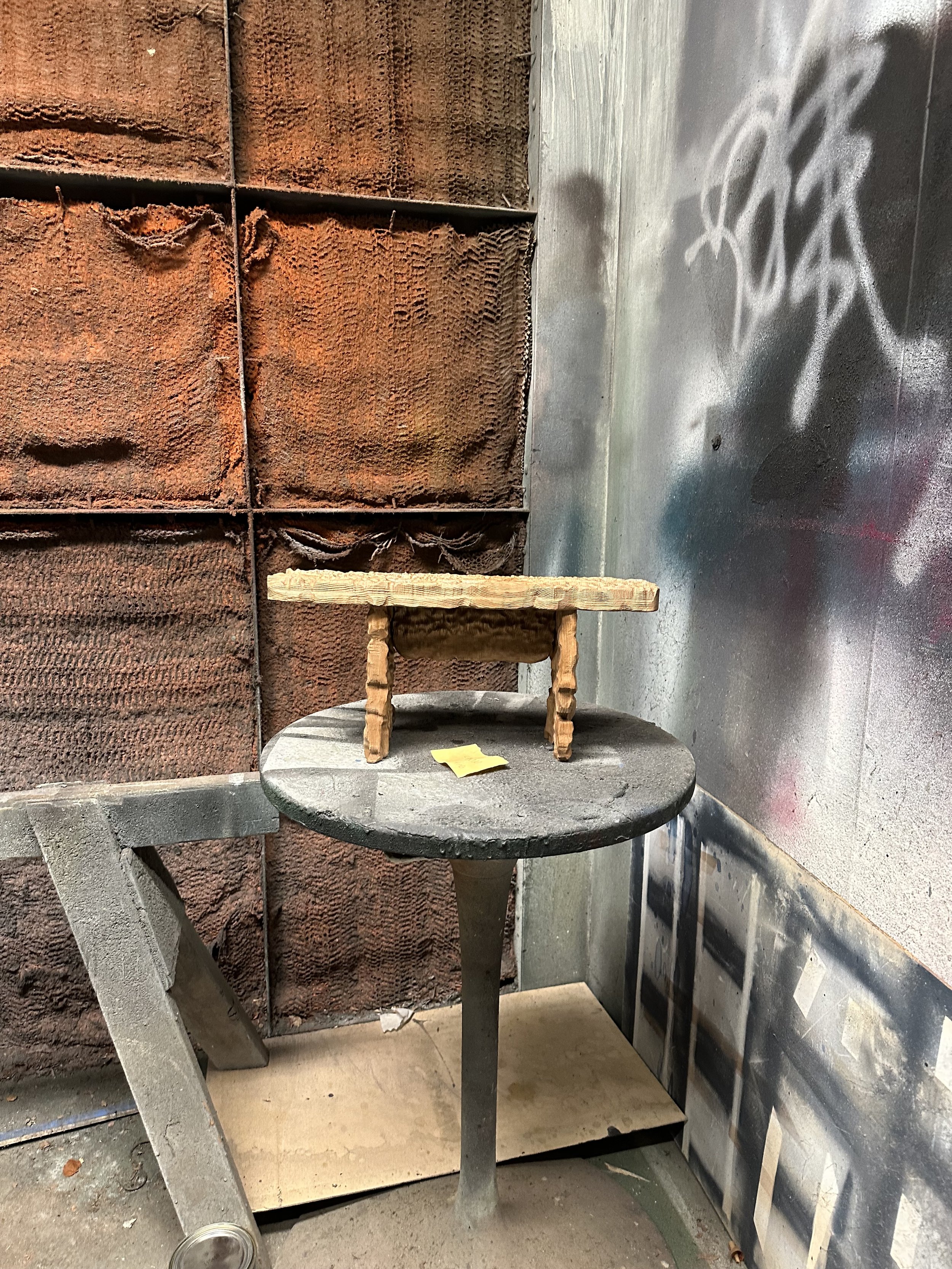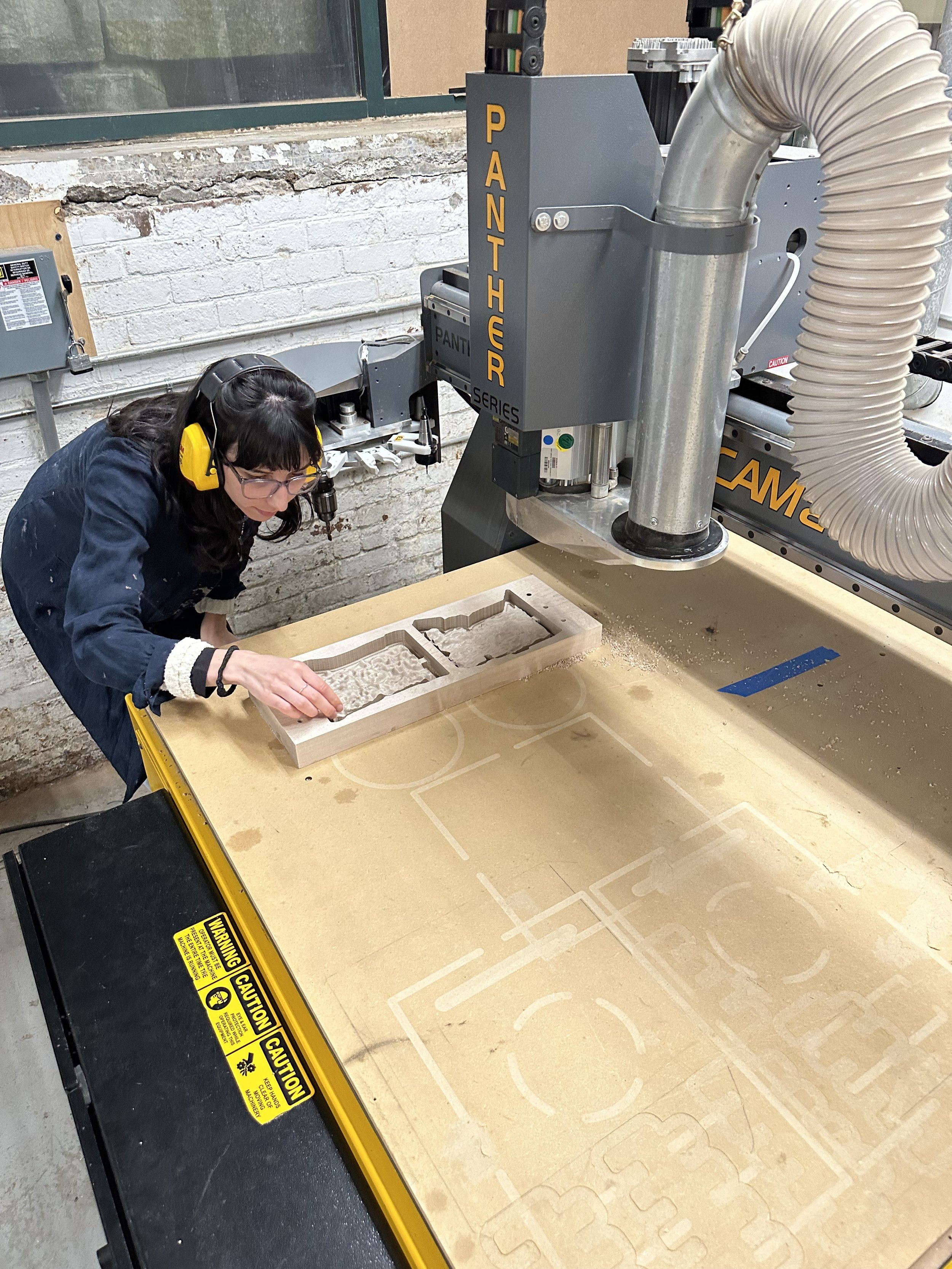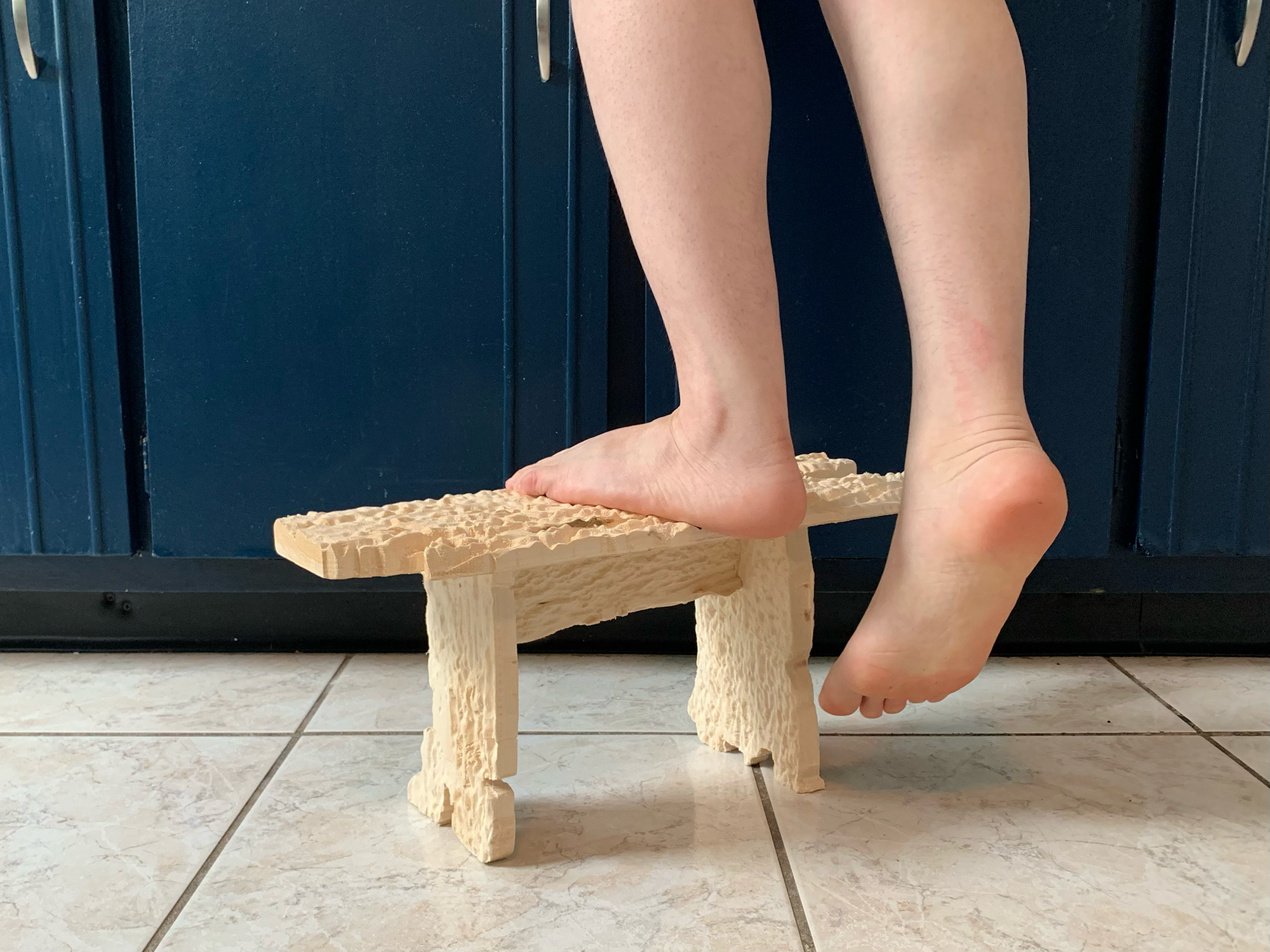
How would you feel stepping onto a stool that looks to be rotten from termites? Even if the structure is actually perfectly sturdy?
The “Termite stool” is the first test in a series of “Piezas polillizadas,” which uses CNC milling to emulate the patterns left by termite damage, in an exploration of the roles “decayed” and “precarious” objects might play within the home.



Images of termite-eaten wood were crowdsourced from across Guatemala and Mexico, then scanned and transformed into 3D shapes using CAD.
Nature and technology took turns in this process, flipping creation and decay, the difficulty of fighting termite damage with the difficulty of replicating their effects, as well as the energy termites create by eating wood versus the energy expended to mill out the stool.
Sourcing photos of termite-ridden wood
While in Providence, I asked friends in Guatemala and México to send me photos of wood they found that had been visibly affected by termite damage. These pieces are common sights in areas like La Antigua, Guatemala, where residents are always on the look-out for signs of termite damage to their home and wooden furniture.

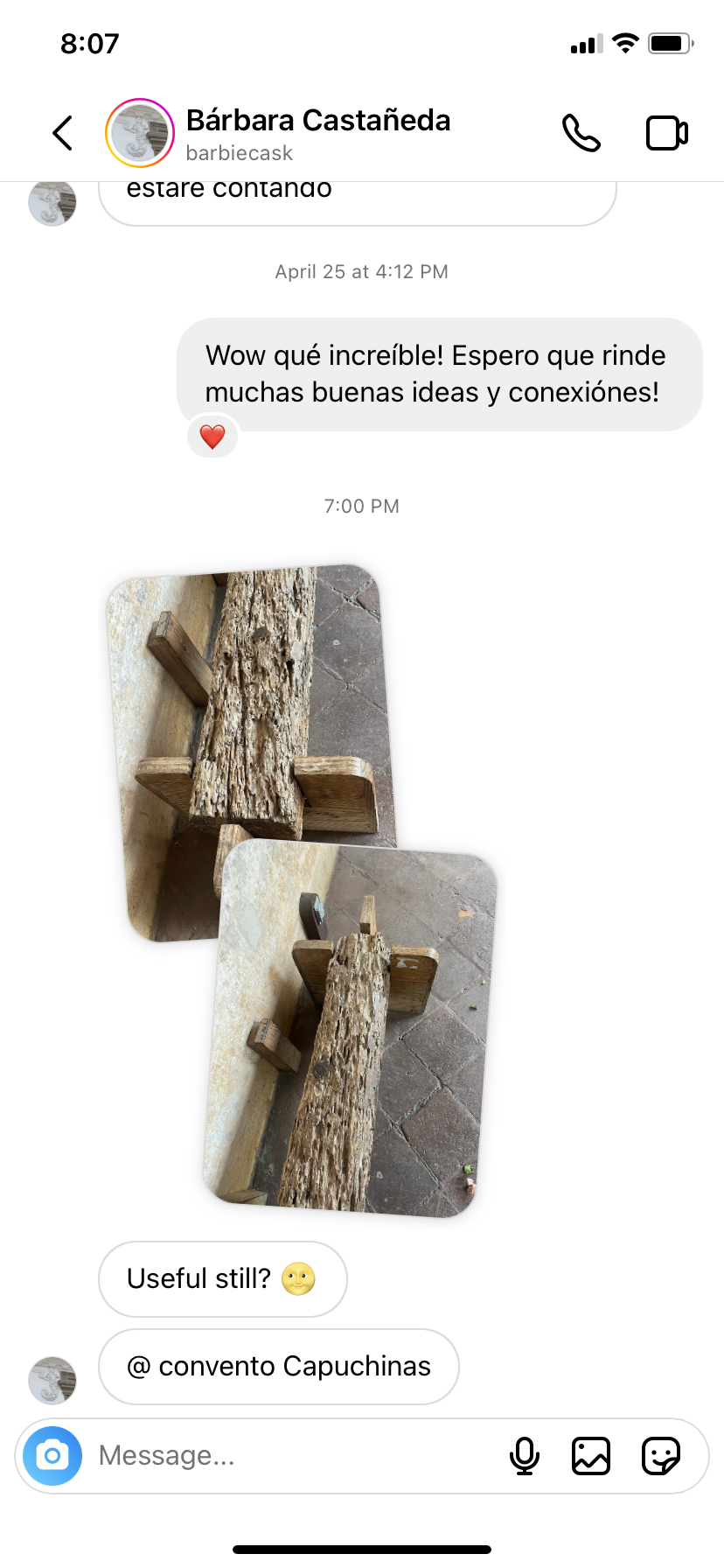


Turning the images into 3D scans
Using Rhino, I created a 3D relief map of these images, and started testing which commands in the program created the most realistic patterns in real life. The patterns became familiar representations of the termite damage, yet remained abstractions due to the inability to physically scan the pieces.
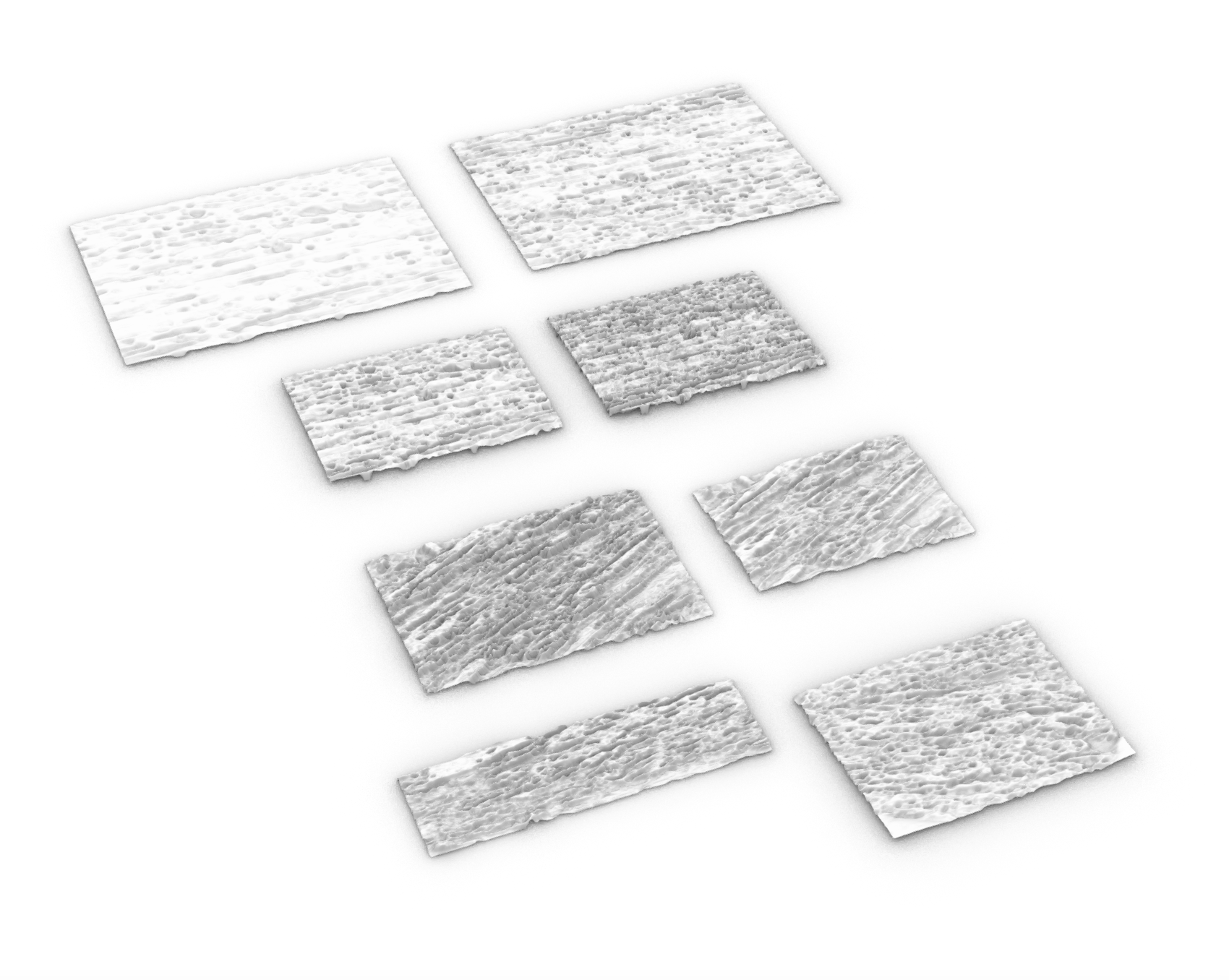



Making the CNC behave like a termite
Once I had tested several versions of the scanned reliefs, I used the CNC to recreate termite patterns within brand-new boards of bass wood. As a subtractive fabrication tool, I was making the CNC eat away at the material, but to create something new. Termites, on the other hand, take newer wood and subtract material for their own purposes. The resulting pieces are reminiscent of decaying, decimated wood, yet inside are perfectly strong and able to bear weight.




Each face of this stool’s components utilized different photos, resolutions, and CNC commands in order to explore the production of termite patterns. I then hand-finish the piece using sand-blasting, hand-carving, and custom joinery.
